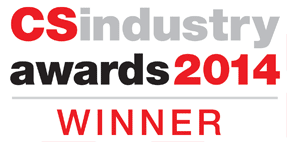Lake Shore THz system for materials characterization wins 2014 Compound Semiconductor CS Industry Award
03/19/2014

Lake Shore announced today that it has been named a joint recipient of a 2014 Compound Semiconductor CS Industry Award for its new 8500 Series Terahertz (THz) System for Material Characterization.
Presented Tuesday night at the CS International Conference in Frankfurt, Germany, the award went to both Lake Shore Cryotronics and EMCORE in the Metrology, Test, and Measurement category. The CS Industry Awards recognize success “along the entire value chain of the compound semiconductor industry from research to completed device, focusing on the people, processes and products that drive the industry forward.”
Lake Shore’s collaboration with EMCORE’s fiber optics researchers in Alhambra, Calif., resulted in the development of the system’s variable frequency continuous wave (CW) THz spectrometer for cryogenic and magnetic applications.
The Lake Shore system addresses the challenge faced by semiconductor developers who want to explore the THz-frequency properties of emerging bulk and thin film semiconductors, organic electronics, and oxides. The system is unique because it offers researchers an affordable, fully integrated hardware/software platform for characterization of these materials in a high-field cryostat at frequencies within the so-called “THz gap.”
Until its introduction, THz characterization had been available only to well-funded institutions and to researchers highly skilled in the complexities of optical measurements. Using the Lake Shore platform requires no special optics knowledge. All of the careful alignment and calibrations of THz components have already been done, enabling quick setup and use in R&D labs.
“We’re honored to have received this award,” said Scott Yano, VP of Product Development at Lake Shore. “Since THz frequency energy aligns well with many phenomena of interest in emerging electronic and magnetic materials, key research institutions are currently using the system to characterize materials with potentially groundbreaking properties. The semiconductor R&D community will benefit from this non-contact, non-destructive tool for development-scale semiconductor material study.

